3 Killer Chuck Berry Blues Guitar Licks
Today I want to share 3 essential Chuck Berry-style blues guitar licks with you. These 3 licks will give you immediate insight into some of his signature guitar moves, including tricks like staccato bends, double-stops, and repetitive phrases.
All of these licks are in the key of Bb major. But once you get them down, you can move them to any key you want by simply changing the fret they start on.
So make sure you’re tuned up and let’s get started!
Lick # 1
Lick #1 starts off with a quick bend on the 8th fret of the 3rd string. Here we are right away going to be a signature Berry technique, staccato bends. A staccato bend is a bending technique where the bent note is played with short and distinct, separated articulation.
So instead of sustaining the bent note, it is played briefly and quickly released, creating a crisp and punchy effect. The staccato bend adds rhythmic emphasis and can be used to create a dynamic and expressive playing style. This note is going to be bent up a whole step (2 frets).
Then right after the bend we will play the note F twice on the 6th fret of the 2nd string.

Then we’ll play the staccato bend again, but this time after it we will only play one pluck on the F note on the second string. This goes twice like this:
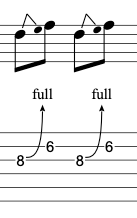
This brings us to another concept that Berry would use in his solos all the time, and that is repetitive figures. A repetitive figure is simply a melodic or rhythmic pattern that is repeated over and over.
It is a recurring motif or phrase that adds consistency, structure, and familiarity to the music. This can be a short sequence of notes, a chord progression, a rhythmic pattern, or a combination of these elements. Here we are using a short sequence of notes.
But by repeating a figure like this, Berry creates a driving musical theme in his solo.
These 4 beats altogether go like this:
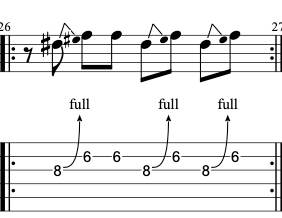
Once you get a repetitive figure going, then you have to find a way out of it, and here’s how Berry would often do that. He repeats the first part of the lick but then takes a different path and uses a double-stop hammer-on to get out of the pattern. Here he would play the 3rd and 2nd strings hammering into part of a Bb major triad. If you play the 6th fret on the 2nd string, the 7th fret on the 3rd string, and the 8th fret on the 4th string, you’ll get a Bb major triad. This is essentially the chord shape that Berry is outlining in his solo.
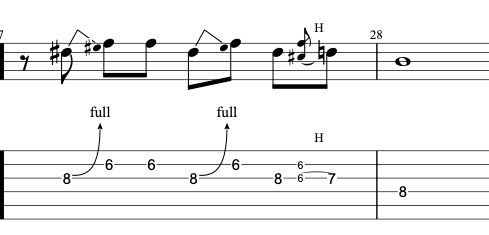
Altogether the lick goes like this:

Lick # 2
Lick #2 comes right out the gate with classic Berry-style double-stops. Remember – a double stop on guitar refers to when two notes are played simultaneously. It involves fretting two strings with either two separate fingers or one finger barring across both strings. The result is a harmonized sound created by the combination of the two notes played together.
This is how this lick starts by sliding into the 6th fret on both the 2nd and 1st strings. Here I use my index finger to bar and grab both of these notes like this:
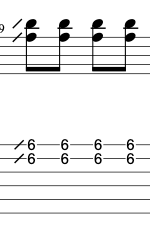
Double-stops can be used to add richness, texture, and melodic interest to guitar playing. They are commonly used in various genres such as blues, country, rock, and jazz. Guitarists often incorporate double stops into their solos, riffs, and chord progressions to create harmonies, intervals, and melodic embellishments. Double-stops can be played in different positions on the neck and across various strings, allowing for a wide range of creative possibilities and expressive playing.
Then Berry would continue by outlining that Bb major triad, just like Lick #1.
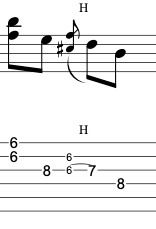
Tip: the more you dive into Berry’s music the more you will find similarities in many of his solos and songs. For example, repetitive figures. This first bar becomes one. Altogether it goes like this:
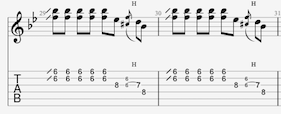
After repeating that theme, Berry would often cut out just the last part of it and then play that as a repetitive figure. Here I am referring to these last 2 beats that go like this:
Then finally to escape this now second repetitive figure (in the same lick!) he might do a bluesy bend like this:
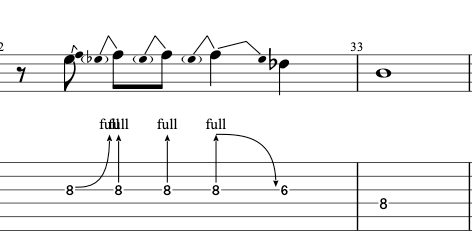
This bluesy lick comes right out of the Bb minor blues scale. The Bb minor blues scale consists of the following notes: Bb, Db, Eb, E, F, Ab. Let's break down each note's significance:
Bb: The tonic or root note of the scale, providing the tonal center.
Db: The flattened third, adding a distinct bluesy character to the scale.
Eb: The fourth note of the scale.
E: The sharpened fourth or augmented fourth, also known as the "blue note." It adds a characteristic tension and bluesy flavor to the scale.
F: The fifth note of the scale.
Ab: The flattened seventh, contributes to the bluesy and melancholic sound.
Now, the Bb minor blues scale can be played in a lot of different positions and patterns on guitar. But here is the pattern I would recommend learning that goes along with all of these licks in this lesson.
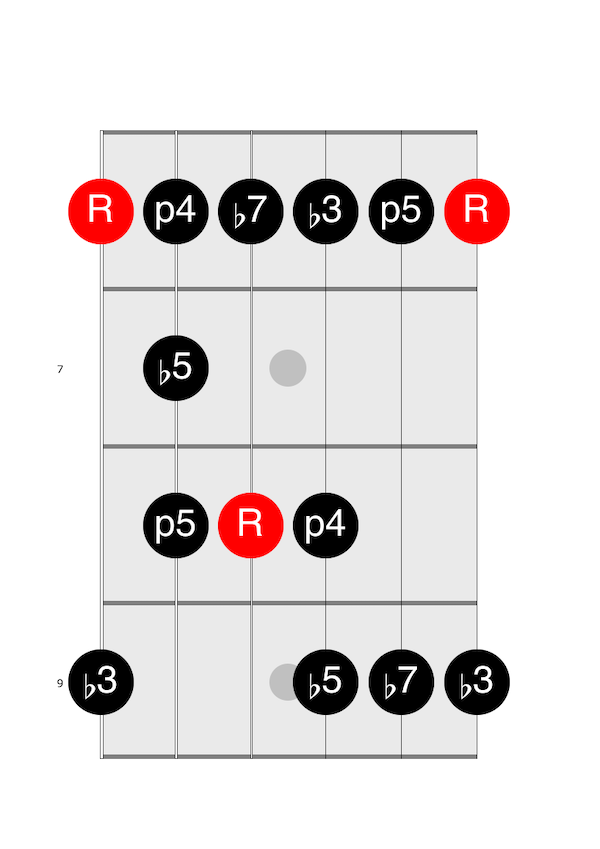
These same strings and frets would go:
6th string = 6, 9
5th string = 6, 7, 8
4th string = 6, 8
3rd string = 6, 8, 9
2nd string = 6, 9
1st string = 6, 9
Altogether Lick #2 goes:

Lick # 3
In this final lick, we’ll really see how Berry not only just used one scale, but combined all sorts of scales and sounds together in a much more sophisticated way. The first 3 notes of this lick is something I call the “launching point” lick. This short phrase came from earlier electric blues players like T-Bone Walker. It’s a great way to start a lick and launch into something else. And that is exactly how Berry is using it here.
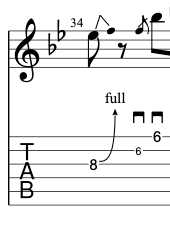
After this, he walks down using notes from a Bb7 chord and the Bb major pentatonic scale.
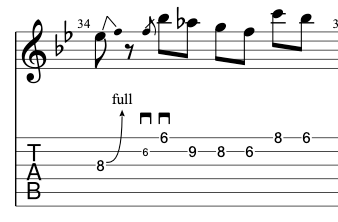
Then the lick ends by dancing around notes of a Bb major chord.
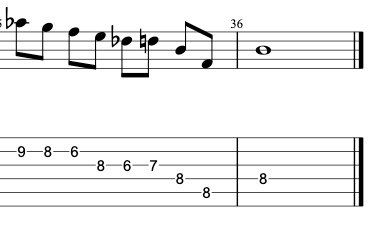
Take a look at how many notes from this part of the lick are in common with notes of this Bb major bar chord at the 6th fret.
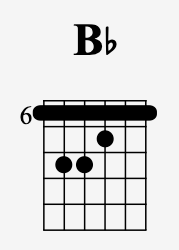
This is an example of outlining chords in a solo. Berry did this just like all the early swing blues players that came before. Here is the 3rd lick altogether.
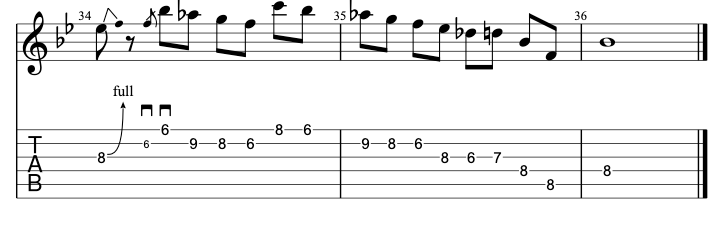
Conclusion:
To sum it all up exploring Chuck Berry's soloing style through these three essential blues guitar licks will give you valuable insights into his iconic guitar techniques. From staccato bends to double-stops and repetitive figures, Berry's playing style showcased a unique blend of rhythm, melody, and expression.
By incorporating these licks into your own playing and studying the scales and chord shapes associated with them, you can begin to capture the essence of Berry's guitar sound and use it in your own solos. And for more Chuck Berry-style lessons check out “No Particular Place To Go” or “Johnny B. Goode” next!
Like this blog post? Get Jon’s best guitar lessons straight to your inbox.
